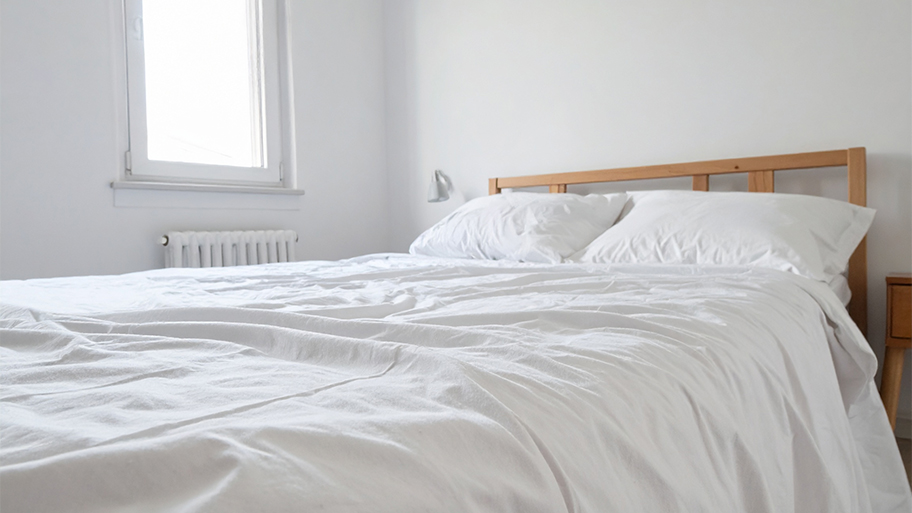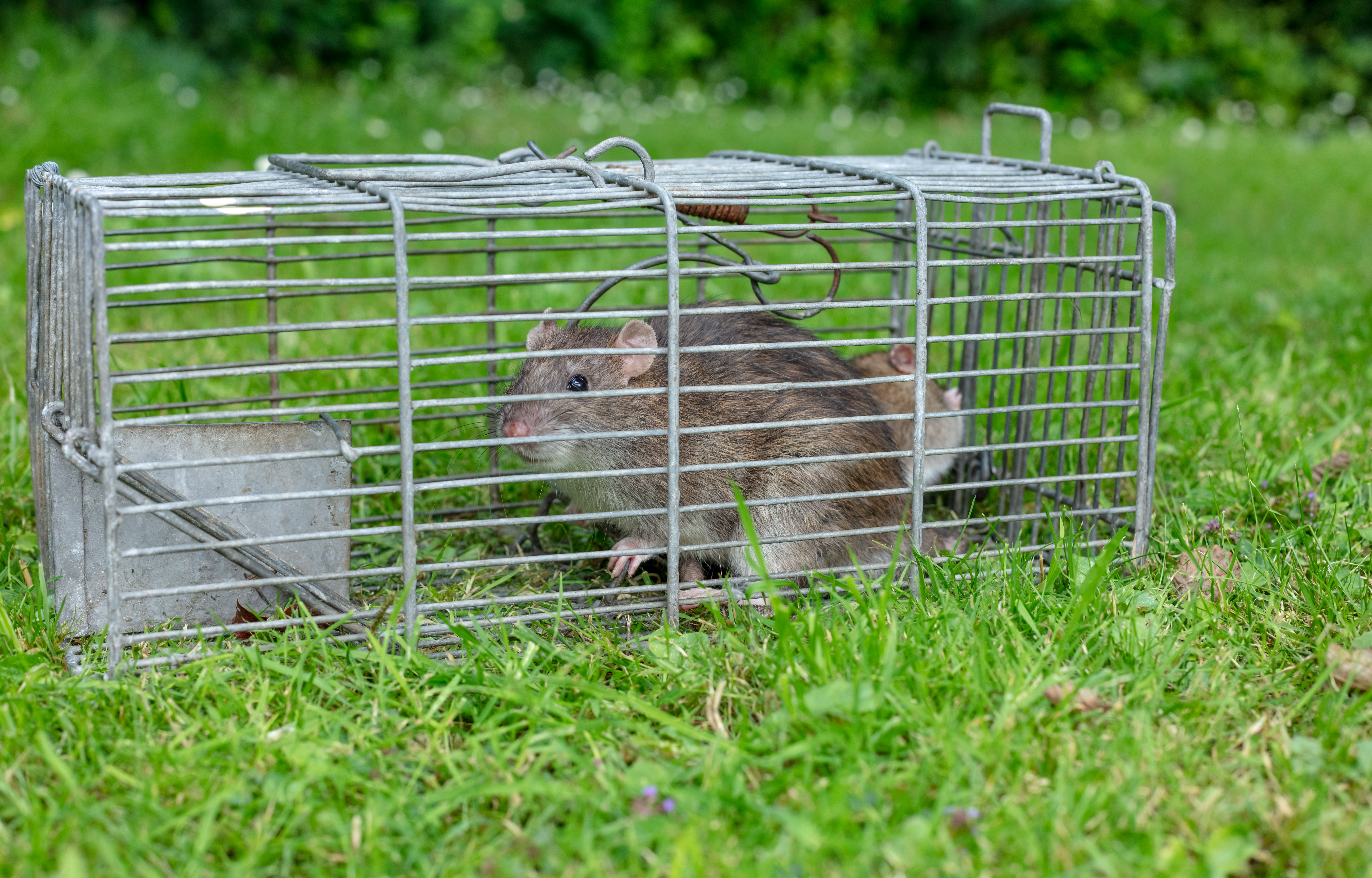
It’s important to know bed bug treatment costs if you have an infestation. Our guide covers different treatment methods and cost factors to eliminate these pests.
Woodpeckers can hammer away at your investment one peck at a time


Woodpeckers can cause quite a headache when they decide to use your home as a drumming board. And we're not talking strictly about noise. Those pesky holes they create can cause structural issues over time. Fortunately, we have your back if you're wondering how to fix woodpecker holes. And even better, the repairs will prevent future attacks in the same areas.
First, assess the extent of the damage created by your fine-feathered frenemies. Deeper holes will require spray foam to fill. Shallow holes will need an epoxy filler. Having an extra set of hands during the project is also advisable. Working on your home's siding can be dangerous, especially when using a ladder at extreme heights.
It’s important to take care with this crucial step when repairing woodpecker holes as it ensures your safety.
Begin by selecting a suitable ladder for the task that is the right height and in good condition. Remember, you don't want to overextend yourself while working. Examine the ladder for any damage or loose components.
Place the ladder on a stable, level surface. Follow the "4-to-1" rule for the correct angle, positioning the base one foot away from the wall for every four feet of ladder height. Consider using ladder stabilizers or standoff brackets for added stability. Test the ladder's stability by giving it a gentle shake before climbing.
Always maintain three points of contact when climbing, and avoid overreaching. Keep your body centered between the ladder's side rails and work within reach. Avoid carrying excessive weight, and have a spotter. And remember, always stay focused on the task and prioritize safety.
Epoxy filler is a good fix for holes no more than 1/4 inch deep. Use the material best suited to your home's exterior. For instance, you may need a wood epoxy or one made for stucco.
To get started, remove any loose fragments and debris in the area. Next, mix the epoxy filler according to the manufacturer's instructions, ensuring it's well-blended. Apply the epoxy filler generously into the holes, slightly overfilling them to account for any shrinkage as the filler dries.
Use a putty knife or a similar tool to smooth the filler and level it with the surrounding siding. Allow the epoxy filler to dry thoroughly, which may take several hours or overnight. Once dry, sand the repaired area to create a smooth finish.
Filling deep holes in a home's siding using foam filler is reliable and reasonably quick. It acts as a robust sealant that provides insulation and structural reinforcement.
It helps to lightly clean the area you are repairing to ensure a proper bond. Next, attach the applicator nozzle to the foam filler canister. The nozzle allows for precise application of the foam into the holes.
Now, carefully insert the applicator nozzle into the woodpecker hole and gently squeeze the foam filler trigger. Begin by filling the void partially, as the foam will expand. Avoid overfilling, as this can cause excessive pressure and bulging. Let the foam expand and cure as per the manufacturer's instructions. Typically, it takes several hours for the foam to set fully.
After the foam filler has cured, use a utility knife to trim any excess foam that may have expanded beyond the hole's surface. Once cut, use sandpaper to smooth the foam, leveling it with the surrounding siding. Don’t forget to wear your dust mask—you don’t want to inhale particles.
Covering repairs with metal flashing is a smart and durable solution, especially when dealing with more extensive or recurring damage. It is also an effective way to stop woodpeckers from pecking your house because they can’t hammer through metal.
Using tin snips or metal shears, measure and cut a piece of flashing larger than the repaired area by a few inches on all sides. This extra width will ensure a secure patch.
Place the cut flashing over the area. Use screws and a drill to secure the flashing in place. Space the screws evenly around the perimeter of the flashing to hold it securely against the siding. Remember you want to create a smooth surface, so ensure the flashing is flush.
To prevent moisture infiltration and ensure a watertight seal, apply a paintable waterproof patch and seal spray. This will create an additional barrier against the elements. You can use the spray for minor repairs after using epoxy instead of flashing.
Painting the repaired areas is a crucial step to ensure the durability and aesthetics of the repair.
Begin by choosing a high-quality exterior-grade paint and primer suitable for metal surfaces. Look for paint specifically designed for outdoor use, as it will be more resistant to weathering and moisture.
Before painting, ensure the metal flashing is clean and free from dust, dirt, and loose particles. You may need to wipe it down with a damp, clean rag to remove any grime. Allow the flashing to dry completely before proceeding.
Grab your primer and paintbrush or paint sprayer. Follow the manufacturer's recommendations for the primer application, including drying times.
Apply the exterior-grade paint evenly to the surface using a high-quality paintbrush or sprayer. Start with a thin, even coat and allow it to dry according to the paint manufacturer's instructions. Applying two or more coats for better coverage and protection is often recommended.
Ensure each coat is allowed to dry thoroughly before applying the next one. Typically, exterior-grade paints may take a few hours to dry to the touch and up to 24 hours or more to cure fully. Avoid exposure to rain or moisture during this time.
When done, clean your paint brushes and equipment. Dispose of any leftover paint or empty containers properly. It is a good idea to check local guidelines for paint waste removal.
Woodpeckers are difficult to drive away once they have established a territory or started nesting. For this reason, you should attempt to drive them away as soon as you notice them pecking at your home. These strategies might help ward off noisy woodpeckers:
Hire an exterminator to remove insects from wood, cutting off the birds’ food supply.
Install steel mesh along your roofline at least 3 inches from the siding. Ensure it is taught and has no entry points to avoid birds getting trapped in the netting.
Set out shiny reflective streamers along the edge of your roof, as their movement often wards away the birds.
Fill in holes with wood putty, but avoid sealing up any nesting holes that may have eggs in them.
Whether to DIY or hire a professional to fix woodpecker holes largely depends on the extent of the damage, your level of experience, and your comfort with home repair tasks—not to mention comfort with heights. And then there's the question of aesthetics or surprise extra steps that might be needed to prevent future structure damage. Working with a local siding professional will yield optimal results in both instances.
Fixing a small hole in vinyl siding costs $50 to $100 on average, depending on labor and material costs in your location. On the other hand, addressing woodpecker damage in wood siding can be considerably more expensive, with prices ranging from $100 to $200 per hole.
More extensive remedies for larger holes may be more expensive, as they involve patching or replacing entire panels. On average, repairing siding comes to an estimated cost of $900. However, the total expense can vary significantly, falling within the range of $350 to $1,500 and going as high as $16,400, based on how bad the damage is.
From average costs to expert advice, get all the answers you need to get your job done.

It’s important to know bed bug treatment costs if you have an infestation. Our guide covers different treatment methods and cost factors to eliminate these pests.

Budget for the cost of tick extermination services using our helpful cost guide.

When calculating the cost of hiring a flea exterminator, consider your home size and the infestation extent. This guide will help you figure out what to budget.

If you see a mouse hole in the wall, it’s time to seal your house from mice. Our guide will show you how to safely and humanely seal a house from mice.

Taking on a flea infestation means destroying the source—their eggs. In addition to calling the pros, there are some DIY tricks for how to get rid of flea eggs.

Noticing a growing number of rats calling your yard or garden home? Here are your best options to deal with them.